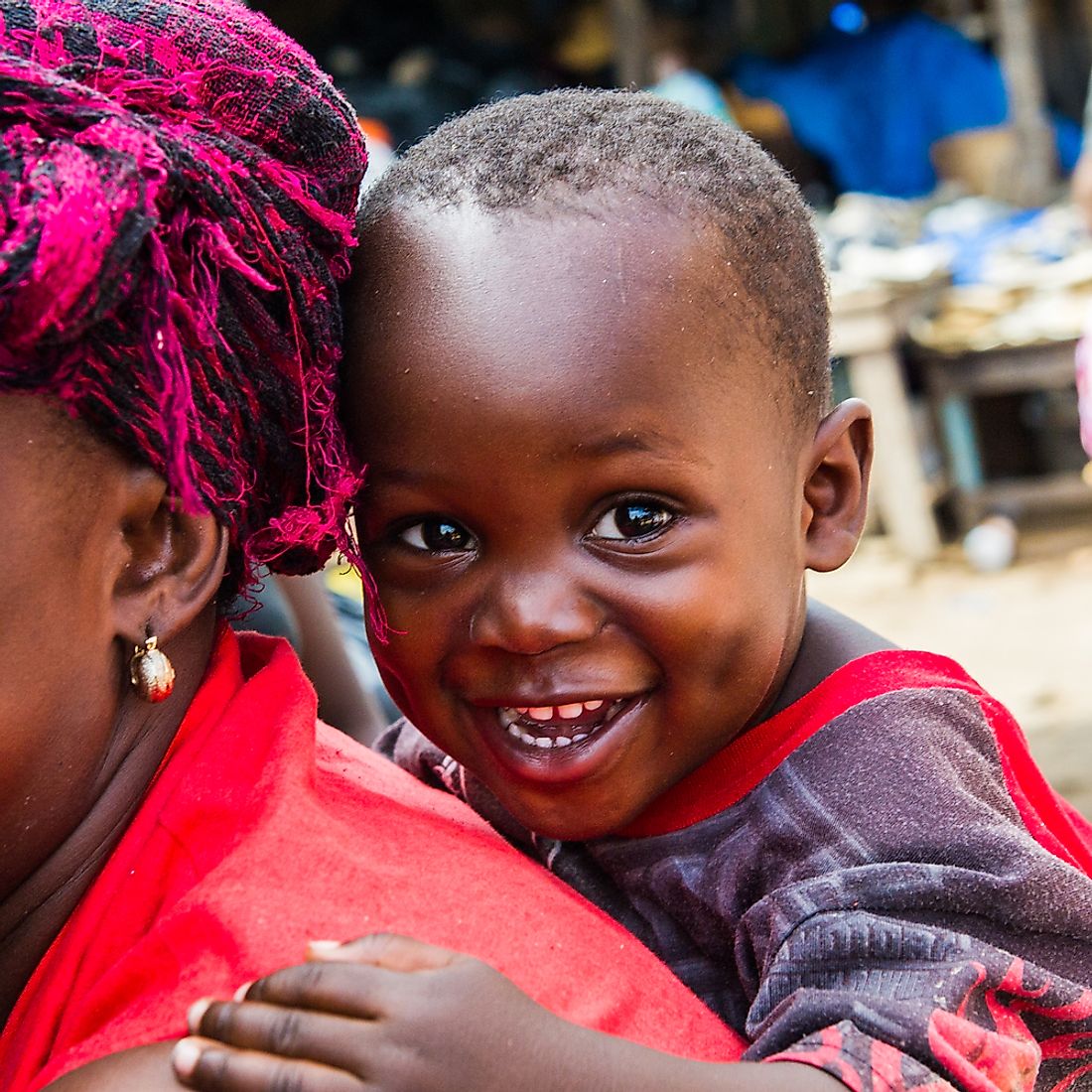30 Countries With The Youngest Populations In The World

While a ‘graying’ of the population is occurring in such countries as Japan, Greece and Finland, other parts of the world, especially much of Africa, are experiencing the a quite different trend. The contrast that exists between the oldest and youngest populations of the world is rather stark. In Japan, known to have the world’s largest oldest population, only 13% of its citizens are under 15. The situation in Niger has been found to be the opposite, with a full 56.9% of its population under 18 years old, the highest percentage of citizens within that category of any nation in the world. An analysis of the youngest populations in the world, and forecasts for future changes, has been presented by the United Nations (UN). The UN data leads us to look at Africa as the continent where countries have more people under 18 than on any other continent in the world. What’s worse is that the youth population on the African continent is projected to double by 2050, which will place more and more stress on already strained resources for the region.
The Two Countries with the Youngest Populations
As statistics confirm, the country with the highest percentage of its population 18-years-old or younger is Niger, with a full 56.9% of its population being made up of such youth. This lopsided age-group demography in Niger has been correlated to an inclination of having larger-sized families within the culture there and a lack of access to contraceptive measures. For the record, an average woman in Niger has around 8 children. This explosion among the younger population can lead to serious trouble within the country as it continues to fight against an already difficult poverty trap. Next on the list is Uganda, with its citizens under 18 years of age constituting 55% of the country’s entire population. The reasons behind this boost in the Ugandan youth population are much the same as those seen in Niger (a lack of access to contraception and a general inclination towards having larger families). What makes matters worse is the fact that unemployment among the youth is also extremely high in Uganda. If things persist this way, the growing youth population and their unemployment will place immense pressure on Uganda’s resources.
Other Countries to Make the List
Next in line on this list is Chad, where the proportion of the population under 18 years in age comprises 54.6% of its total population. As one of the poorest countries in the world, its ever-growing youth population is a major problem. The reasons why Chad has so many youth citizens includes low levels of education for women, women’s lack of control over reproduction decisions, and a lack of access to effective family planning assistance. As a landlocked nation, Chad apparently has a life expectancy of only 51.18 years, with the employed there earning around a meager $1,621 a year. Let’s not forget that unemployment is also a major problem for the country that needs to be resolved so this large group of youthful citizens can contribute towards Chad’s continued development.
Other countries that have made it onto our list of countries with the highest percentages of citizens under 18-years-old include Angola, Mali, Somalia, Gambia and Zambia. These African countries have youth citizenry proportions of 54.3%, 54.1%, 53.6%, 52.8% and 52.6% of the total population, respectively. Within many of them, the reasons behind these high percentages are much the same as discussed above, including lack of education, lack of access to effective birth control and a general inclination towards having larger-sized families. The only non-African country nearing the top of this list is Afghanistan, with a relative youth population of 51.4%.
A Global Issue that Warrants Attention
These spikes in youth populations among the countries mentioned above is a major problem that will likely grow worse yet still. What makes matters worse is that poverty and unemployment are also fairly prominent in these countries, which adds to the reasons why this boom in citizens under 18 is so problematic for them, as they will have less and less to work with as they start their own lives and careers as adults. To reduce these statistics, it is necessary for the governments of these countries to make access to both education and birth control easier for their citizens, and persuade their citizenries to reconsider cultural norms regarding family size and planning. These young people also will need jobs and economic opportunities as they grow older, and, as their respective countries’ populations continue to grow, simply spreading what little wealth is already available will simply not be an option.
Countries With The Highest Percentage Of Population Under 18 Years Old
| Rank | Country | Percentage of Population under 18 Years Old |
|---|---|---|
| 1 | Niger | 56.9 % |
| 2 | Uganda | 55.0 % |
| 3 | Chad | 54.6 % |
| 4 | Angola | 54.3 % |
| 5 | Mali | 54.1 % |
| 6 | Somalia | 53.6 % |
| 7 | Gambia | 52.8 % |
| 8 | Zambia | 52.6 % |
| 9 | Democratic Republic of the Congo | 52.6 % |
| 10 | Burkina Faso | 52.3 % |
| 11 | Mozambique | 52.1 % |
| 12 | Malawi | 52.0 % |
| 13 | Tanzania | 51.6 % |
| 14 | Afghanistan | 51.4 % |
| 15 | Burundi | 50.9 % |
| 16 | Nigeria | 50.4 % |
| 17 | Senegal | 50.2 % |
| 18 | Sao Tome and Principe | 49.3 % |
| 19 | Cote d'Ivoire | 49.3 % |
| 20 | Cameroon | 49.1 % |
| 21 | Guinea | 49.1 % |
| 22 | Sierra Leone | 49.1 % |
| 23 | Timor-Leste | 49.1 % |
| 24 | Eritrea | 49.0 % |
| 25 | Republic of the Congo | 48.9 % |
| 26 | Liberia | 48.9 % |
| 27 | South Sudan | 48.8 % |
| 28 | Benin | 48.8 % |
| 29 | Ethiopia | 48.7 % |
| 30 | Madagascar | 48.6 % |







